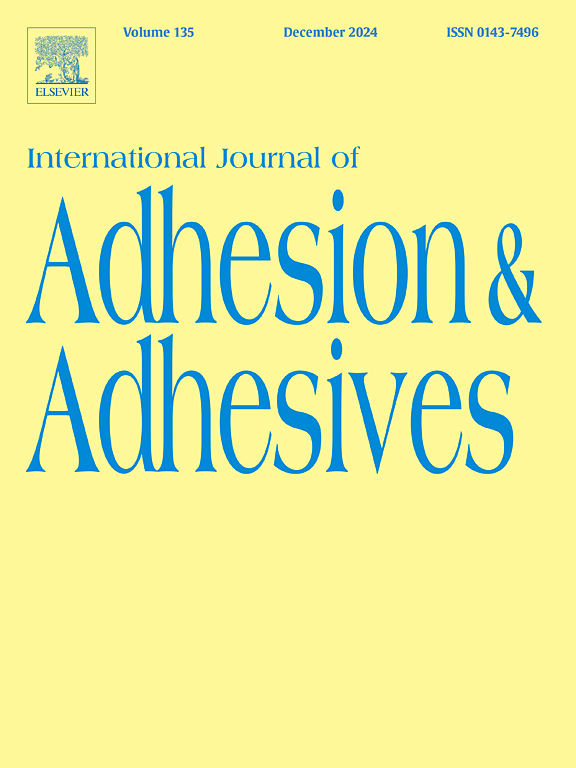聚氨酯粘合剂的闭环:酸解工艺优化
IF 3.2
3区 材料科学
Q2 ENGINEERING, CHEMICAL
International Journal of Adhesion and Adhesives
Pub Date : 2024-09-18
DOI:10.1016/j.ijadhadh.2024.103843
引用次数: 0
摘要
聚氨酯粘合剂(PUA)是聚氨酯的一种特殊应用。聚氨酯废料的酸解可产生具有可调特性的再生多元醇。通过响应面方法对该工艺进行了优化,以预测可达到最低粘度、羟基和酸值的参数域。建立了温度、聚氨酯与多元醇的比率、聚氨酯与酸的比率、粘度、分子量、羟基和酸值之间的关系,并验证了稳健工艺的最佳条件。聚氨酯与酸的比率对产品的酸值影响最大。羟值、粘度和分子量主要受聚氨酯与多元醇比率的影响。利用 205 °C 下获得的回收多元醇、1.4 kg/kg 的聚氨酯与多元醇比率和 50 kg/kg 的聚氨酯与酸比率,我们成功生产出了一种含有 28% 回收材料的新型粘合剂。这种粘合剂在木材应用中的粘合性能与原始粘合剂相当,而且不会出现碰撞现象。本文章由计算机程序翻译,如有差异,请以英文原文为准。
Closing the loop of polyurethane adhesives: Acidolysis process optimization
Polyurethane adhesive (PUA) are a specialized application of polyurethanes. Acidolysis of PUA waste yield a recycled polyol with tunable properties. This process was optimized by response surface methodology to predict the domain of parameters where the lowest of viscosity, hydroxyl, and acid values could be achieved. Relationships between temperature, polyurethane-to-polyol, and polyurethane-to-acid ratios, and viscosity, molecular weight, hydroxyl and acid values were established and optimal conditions were validated for a robust process. The polyurethane-to-acid ratio had the most significant influence on the acid value of the product. Hydroxyl value, viscosity and molecular weight were primarily affected by the polyurethane-to-polyol ratio. Using a recycled polyol obtained at 205 °C, a polyurethane-to-polyol ratio of 1.4 kg/kg, and a polyurethane-to-acid ratio of 50 kg/kg, we successfully produced a new adhesive incorporating up to 28 % recycled material. This demonstrated adhesion properties for wood applications on par with those of virgin adhesives, without experiencing crash phenomena.
求助全文
通过发布文献求助,成功后即可免费获取论文全文。
去求助
来源期刊

International Journal of Adhesion and Adhesives
工程技术-材料科学:综合
CiteScore
6.90
自引率
8.80%
发文量
200
审稿时长
8.3 months
期刊介绍:
The International Journal of Adhesion and Adhesives draws together the many aspects of the science and technology of adhesive materials, from fundamental research and development work to industrial applications. Subject areas covered include: interfacial interactions, surface chemistry, methods of testing, accumulation of test data on physical and mechanical properties, environmental effects, new adhesive materials, sealants, design of bonded joints, and manufacturing technology.
 求助内容:
求助内容: 应助结果提醒方式:
应助结果提醒方式:


